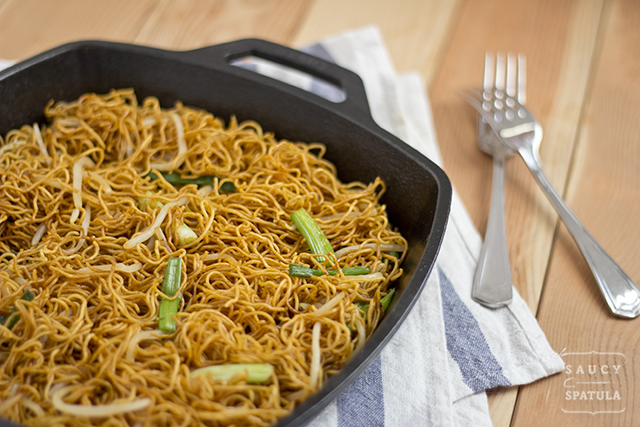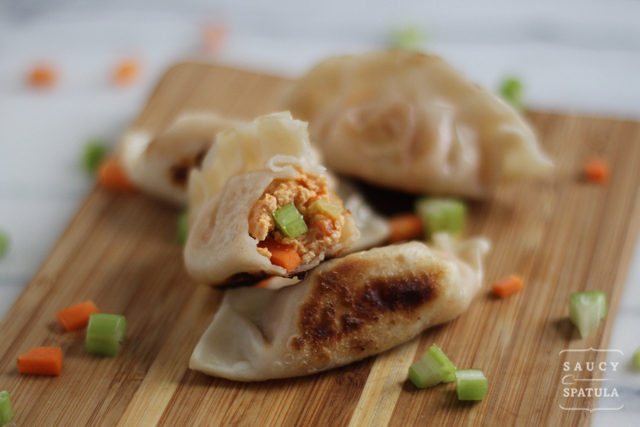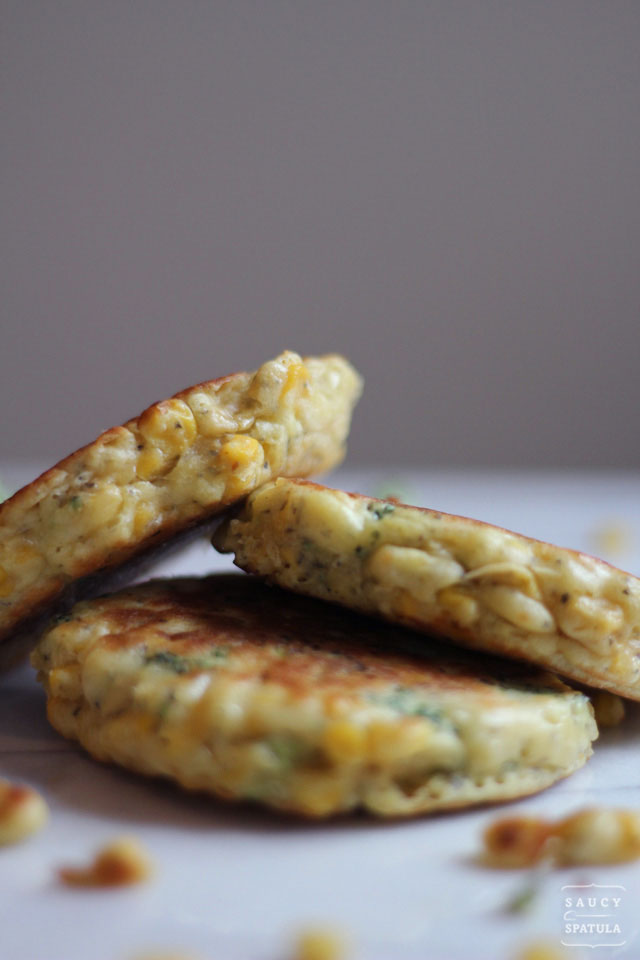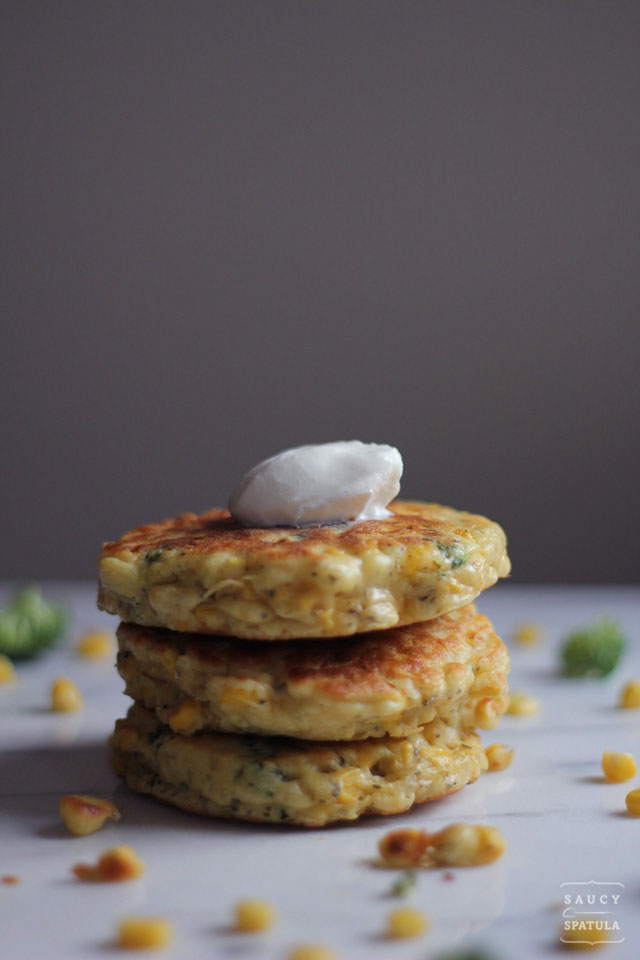There are three things I love and consider comfort food: noodles, dumplings, and wontons. Eat them separately? Eat them together? Egg noodle? Rice noodle? Pan-fried dumplings? Boiled dumplings? Soup dumplings? Eat them plain? Dip in soy sauce? Vinegar? Chili oil? I'm ALL IN. And most of the above is pretty easy to make at home. Then, it comes the fried dumplings that you may see at dim sum.
It's not that deep-frying is hard to do at home but it's just kind of a pain in the butt. Agree? But I decided to do it anyway because I was craving these little fried shrimp dumplings like there was no tomorrow. The trick in making restaurant-quality shrimp dishes is the shrimp. (DUH). Just what do Chinese restaurants do to make shrimp taste so good? The answer is in the texture which is written all over Chinese food. It's all about 口感 (mouth feel) - crunchy, soft, "springy" (彈牙), chewy, smooth, tender, etc... If you've had shrimp from a Chinese restaurant before, you'd notice that the shrimp tastes somehow "crunchier" in an interesting way. I was curious in just how such thing is accomplished so I started poking around for answers. Then, I stumbled upon a post written by Bee over at Rasa Malaysia. To sum up her research, treating shrimp and achieving a pH8 to pH9, which is considered alkaline, will make a crunchier texture. Cold tap water is usually alkaline with close to pH9. And that's why restaurants run cold water on shrimp. "Sea water is pH8 and the reason why live/raw shrimps have firm and crunchy flesh". Bee went further to test another method, that's used at some restaurants, of adding egg white (ph8), tapioca starch, and baking soda (ph8). It turned out to be a success, and it has been her go-to technique for preparing shrimp for stir-fries and whatnot. The only thing about this technique is that it requires 5-6 hours to marinate so plan ahead.
Gosh! Don't you love knowing food science? Or is it just me? Thanks Bee for sharing your findings.
Now, if you want the end product of the shrimp dish to have whole shrimps, then I'd suggest that you give Bee's technique a try. However, for these Fried Shrimp Dumplings (炸蝦角), I was looking for another texture that fried shrimp rolls (炸蝦卷) at dim sums offer. For that, it requires a shrimp paste that's commonly referred to as Ha Kaw (蝦膠) which describes a shrimp paste that's springy or stretchy. But what the heck? How do you do that? Just hold on a second and let me explain before you decide to bail on me! What you really need is to get your hands dirty by mixing the ingredients by hand. If you can do that, you can make Ha Kaw (蝦膠). Yea, sure. You may try using a hand/stand mixer instead but you'll miss out on the fun! Besides, your hands are mandatory in the last step so you might as well get them dirty now. After mixing the shrimp paste together (stirring in one direction continuously), form it into a ball shape. Take it with one hand, then smack it back into the bowl. Repeat that 10 times then it's ready to be used as filling.
For deep-frying, it's handy to have a cooking thermometer so you can keep track of the oil temperature. Something like this from Sur la Table would be ideal because it's got a clip that holds it securely to the pan during frying.
Like spring rolls at dim sum, these fried shrimp dumplings are commonly served with worcestershire sauce (but sometimes served with mayonnaise instead). It's definitely one of my favorite dim sum dishes of all time!
Fried Shrimp Dumplings
Prep time: 35 mins Cook time: 20 mins Total time: 55 mins
Serves: about 24
You'll need:
- 1 lb medium raw shrimp, shelled and deveined
- 2 egg whites
- 2 tbsp olive oil
- ½ tsp salt
- ½ tsp white pepper powder
- 1 tsp sesame oil
- 30 round wonton wrappers
- 2 cups vegetable oil for frying
Approach:
- After peeling and deveining the shrimp, raise it under cold water for a few minutes, then pat dry with paper towels.
- Using the blade of a chef knife, lay it flat and mash the shrimp one by one by putting force down. Then push it to the side of the chopping board. Once all the shrimp has been mashed, give it a few more chops to make sure the consistency is good. Place it all in a big mixing bowl.
- Add egg whites, olive oil, salt, white pepper powder, and sesame oil. Run your fingers clock or counter-clock wise until everything is well-blended together. Then form it into a ball shape. Take it with one hand, then smack it back into the bowl. Repeat that 10 times. Cover the mixing bowl with plastic wrap, refrigerate for one hour.
- Damp a paper towel and cover wonton wrappers when not in use, and place a small bowl of water at your work station.
- Spoon about 1 tbsp of filling onto the middle of the wonton wrapper. Dip your finger in water and run it on the outskirt of half of the wrapper. Pinch the middle point on top, and make pleats on both sides. The tighter you can wrap a dumpling the better.
- In a 5-6 quart sauce pan, heat vegetable oil to 350°F over medium-high heat. Carefully monitor your oil temperature. Fry no more than 4 dumplings at a time. Fry each side for about a minute and a half, until golden brown. Place cooked dumplings on a plate lined with paper towels.
- Serve fried shrimp dumplings with worcestershire or mayonnaise as dipping sauce.






































































































































